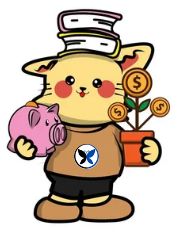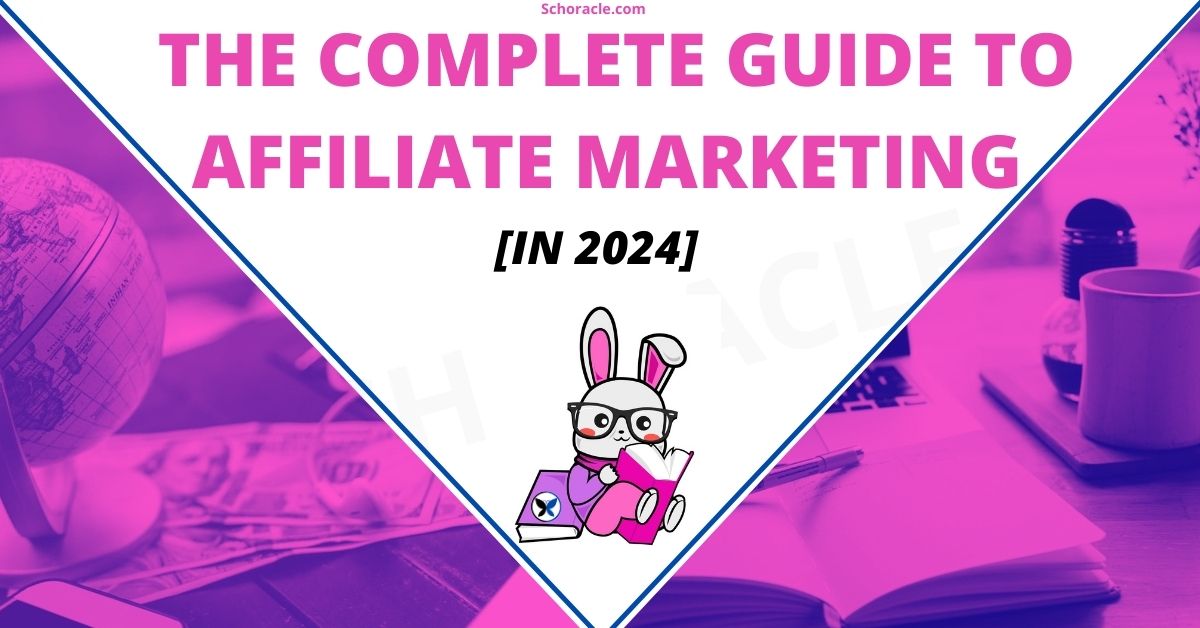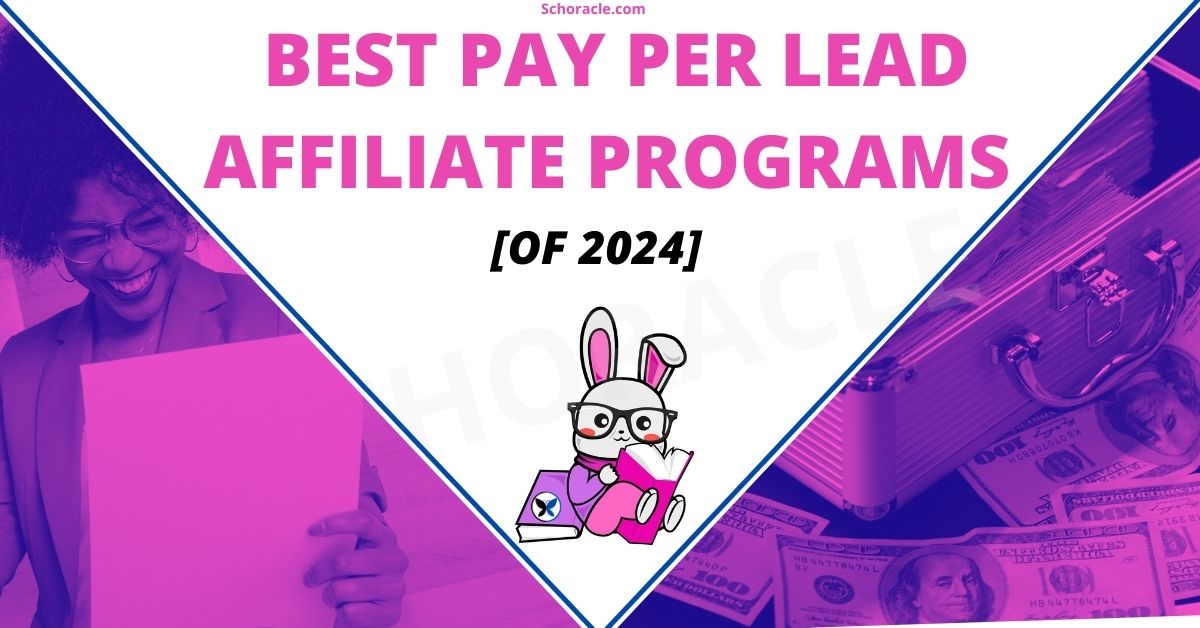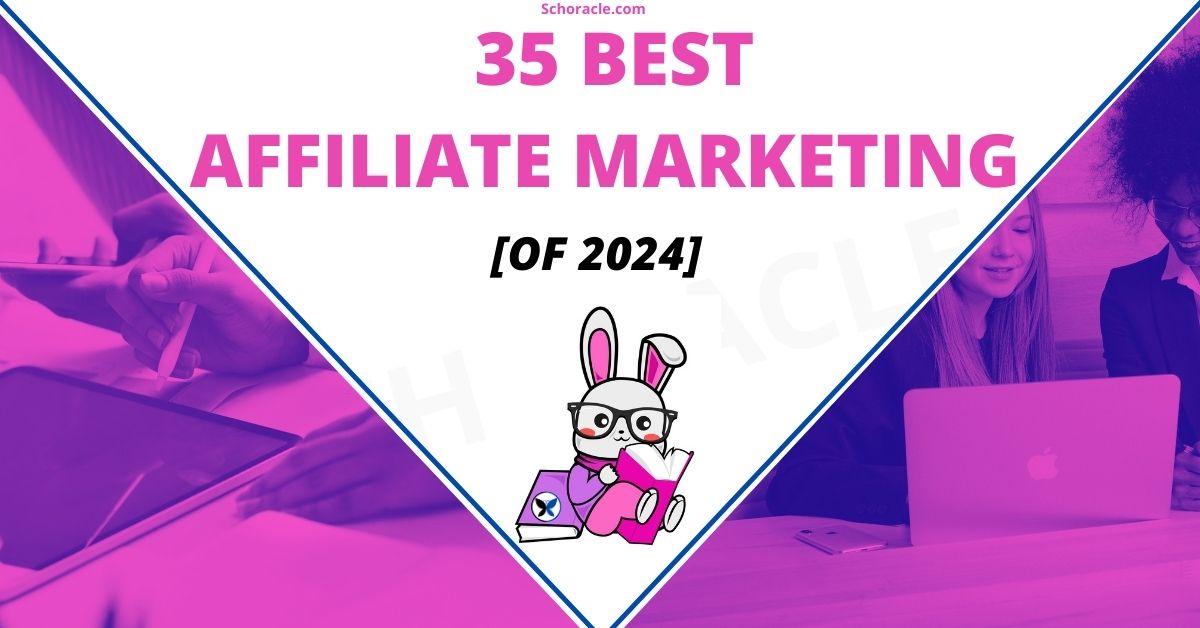You’ve probably heard the term – Affiliate Marketing. Or maybe you haven’t but if you enjoy generating passive income, then affiliate marketing is the perfect career path to make money while you sleep.
Do I have your attention?
Affiliate marketing in the U.S. alone will reach 8.2 billion by 2022, according to Statista. This proves that affiliate marketing is a money-making machine that is getting bigger with each passing year.
In this guide, we’ll go through the absolute basics of affiliate marketing and get you started with your very first set of affiliate programs to generate your first income delivered straight to your bank account.
Let’s get started.
What is affiliate marketing?
Every product requires salespeople to pitch them and awe the customer with fancy details? In Affiliate Marketing you promote the product mostly through digital means to either a global audience or a regional one.
Affiliate marketing is flexible and lets you choose products from the niche closest to your expertise.
Interested in the gaming industry? Affiliate marketing lets you tap into the video game industry to promote gaming mice/keyboards, recommended games, and other types of video game peripherals.
From a whole range of products across the internet like cameras, wellness products, health & fitness, electronics, garden & home, organic produce, pet products, you name it and the affiliate marketing world has a perfect match for you.
TL;DR – Affiliate marketing allows you to generate a commission for every sale you generate through your affiliate link.
How do I find products to promote?
Affiliate products are spread across multiple websites. To promote a product, either visit a merchant website offering an affiliate program or sign up at an affiliate network like ShareASale and Impact that have thousands of affiliate programs under one roof.
Before clicking the sign-up form, it’s good practice to always read the fine print posted on the website. While some affiliate products offer a one-time payout, others offer a recurring payout.
What are single payouts and recurring commissions?
Affiliate products mainly offer revenue in two streams – one-time or recurring commissions.
One-time commissions are a lumpsum payout that is paid after every sale. This is the final settlement for that sale per customer.
Recurring commission assures a cash flow as long as the customer stays subscribed.
Let’s take the following example.
Affiliate A offers products at a 50% commission with a single payout. Affiliate B offers a 30% commission and 20% recurring payments on the membership plan.
Both products are priced at $100.
On product A, you receive a flat 50% commission of $100, which is $50. And no more revenue is earned until you make a new sale.
On product B, you receive 30$ commission, which is $30 + 20% if the customer stays subscribed. Which is $20 for as long as the customer continues.
Does that mean recurring commission wins? Not exactly.
If a low-value product offers a recurring commission, it may take years to reach the same value as a single lumpsum payout.
Likewise, a good recurring commission is better than multiple single payouts.
Ultimately, it comes down to the value of the product and the payout offered.
How do I promote products and pick the right niche?
Once you’ve signed up for an affiliate program, you’ll receive promotional tools such as banners and analytics to track your referrals. Every time you redirect people to your affiliate link and they end up making a purchase, you are paid a portion of the sale as an affiliate commission.
For example – Let’s say you’ve signed up to a Starbucks affiliate program that offers a 10% commission for all their products.
Now you spread the word to your friends and family about how they should try the latest chocolate frappe at Starbucks using your affiliate link or coupon code. Suddenly, everyone’s interested in your post and heading over to buy the drink with your affiliate link.
You make 10% of the total sales as agreed upon in the terms and conditions. So if your monthly referrals shop for a total of $10,000, you make a nice $1,000 as affiliate commission.
And now you’re wondering, is it that simple to make money?
Well for one, Starbucks isn’t offering an affiliate program and even if it did, chances are the commission rate would be extremely small for a reputed company.
Finding a reputed product that pays a good commission is quite difficult in the affiliate world. But not impossible.
A great affiliate product sells itself and your job is to simply spread the word and claim commission. However, there are affiliate products that have an awful rep and the marketer has to triple their efforts for a measly income.
The best affiliate tip ever? – Choose your affiliate product wisely and only shortlist products that have great buyer reviews and a reputed brand that backs itself.
Payment models used in affiliate marketing
Now that you understand how affiliate marketing works, it’s time to get you paid. Popular brands offer flexible payment methods. Let’s showcase each of these.
PayPal
PayPal is a unanimous winner as far as payment methods go for brands.
Based in the United States, it’s accessible by almost every country in the world. This makes it the easiest solution for affiliate marketers working overseas.
PayPal does come with its own Pros and Cons.
Pros
- A large network of affiliate networks and Advertising agencies support PayPal
- Free peer-to-peer transfer (no fees)
- Directly withdraw to your bank account (Available for select countries)
- Extremely secure and has over 15 million vendors
Cons
- Accessing and verifying PayPal requires a mandatory credit card or a bank account.
- Fees are chargeable when money is sent via a debit/credit card or through PayPal currency.
- Cross transfers may have a fee attached depending on the country.
- Very few currencies are supported.
Skrill
Earlier known as Moneybookers, Skrill is a popular e-wallet system similar to PayPal.
It’s quite popular among many brands and affiliate networks and is relatively known for its low fees. Transferring money to your account is completely Free!
For converting currency, Skrill charges a flat 3.99%.
When using bitcoin or cryptocurrency there is a commission charged on the transaction.
Skrill is a free-to-use platform and will remain so as long as the user has used it in the last 12 months.
If a user fails to log in within 12 months, a €2 fee is charged per month.
Let’s summarize the great points and the not-so-great ones about Skrill.
Pros
- Supports over 190 countries and over 40 currencies
- Comes with its own referral/affiliate program
- Free peer-to-peer transfers
- Free withdrawal via bank transfers
- Has a prepaid Mastercard program for U.S. citizens
- Supported by many affiliate networks
Cons
- Currency conversion fee of 3.99% is high
- Not as popular as PayPal
- Withdrawing money via Prepaid card is chargeable
Wire Transfers/Direct Bank Transfer
Can’t get more direct than this.
Having the affiliate network directly send the money to your bank account is the easiest payment choice.
It saves you from exorbitant fees charged by e-wallet gateways and lets you collect your money on time.
It’s also a payment method that’s used by many affiliate networks and brands worldwide.
However, let’s discuss the pros and cons below.
Pros
- Time-efficient to gain funds into your bank account quickly.
- Safely transfer funds by entering your bank details.
- No signups or registrations in e-wallet systems are necessary.
Cons
- Can be slow depending on your bank’s approval process
- Fees are generally charged either on a percentage basis or a flat amount.
- Not all countries support wire transfers from other countries due to legal policies.
What are the best affiliate programs and networks to begin?
We have hand-selected the top affiliate programs and networks that are perfect for beginners to start their journey.
Fiverr Affiliate Program
With over 11 million users registered on Fiverr, the world’s largest digital services platform is a great affiliate program to sign up to.
Their commission plan has one of the highest payouts of $150 per sale.
Fiverr offers plenty of resources to sell their products such as Gig widgets, that can easily be added to your blog layout.
Analytics to track your overall traffic and a user-friendly dashboard.
BlueHost
Touted as the most popular web hosting company, BlueHost has arguably the best CPA of any web hosting company.
For every customer referral that signs up to their hosting plan, you receive $65.
This bonus goes up the more referrals you bring in.
With more referrals, BlueHost also provides a discount further improving your sales.
ShareASale
With over 60% of affiliate programs on the internet, ShareASale is an affiliate network that you don’t want to miss.
It comes with over 45 categories of products and has a user-friendly interface for tracking referrals.
Signing up to ShareaSale is a quick process.
Elegant Themes
All products under Elegant Themes provide a flat 50% commission on the sale.
With award-winning WordPress and Visual Page builder Divi heading the list, it’s easy to take advantage of this affiliate program.
Other products include Bloom – the email opt-in plugin for WordPress.
Monarch – A social media sharing plugin for WordPress.
And Extra – A blogger’s theme for WordPress with a magazine layout.
SEMRush
SEMRush is a popular SEO tool used for keyword research and backlink analysis. It provides marketers with insights related to competitive research and campaign management.
In short, SEMRush is the perfect tool to have to get ahead of the competition in search engines.
A valuable tool like this is easy to promote and convert.
The icing on the cake is that SEMRush affiliates receive $200 every sale and $10 for bringing in a lead, and even $0.01 for just signing up.
Affiliate Marketing FAQ
How to Choose a Niche for Affiliate Marketing?
Now that you have a clear idea of affiliate marketing, how do you choose a niche?
We recommend a niche that you have considerable experience in. Maybe a hobby or a passion.
Familiarity with a topic helps you understand how to market your product. Content creations also become less stressful.
The next step is to look for products related to that affiliate niche.
For example – Let’s say you love gardening, your affiliate products should revolve under plant care, types of compost, fertilizers, seeds, and the like.
If you have multiple passions, choose the one with the lowest competition. You can use tools like KeySearch and SEMRush to find low competitive markets.
Keywords between 2,500 to 6,000 searches a month are a perfect match.
How to Start Affiliate Marketing Without a Website?
While a website does add depth to market your content, it’s not necessary for your affiliate marketing journey.
Fair warning. Many affiliate programs don’t offer their products unless you have a website. A website is still the best option to improve conversions.
It’s also worth noting that many websites frown upon affiliate links that aren’t deep linked. Like within a blog or embedded in a video.
However, here are 5 ways to start your affiliate marketing trek without a website.
1. Social Media Groups
Billions of people use social media daily. Where there are people, there are user interests, and where there are interests, there’s money to be made.
Facebook and Instagram posts are highly popular to bring in traffic. Redirecting traffic back to your affiliate link hosted on a free blog is a great way to sell.
Pinterest is another popular way to add links to pins and harness the power of marketing.
2. YouTube
Video marketing is a rage. Videos are the most consumed content on the internet and with good reasons.
Adding an appropriately placed affiliate link inside the video is clever marketing.
YouTube is an excellent channel for those without a website to maximize their affiliate earnings.
3. Paid Advertising
Good old ads serve as a direct channel to making money. With user intent targeting, ads have become the ultimate source of high conversions.
You don’t even need a website to run these ads. All you need is a backlink to a free blog, your video, or a landing page.
4. Ebooks
One easy way to include affiliate links is by adding them to your eBook. And then, giving it away for free.
Of course, the eBook must offer value on the topic.
Otherwise, it’s just spam and people stay away from it.
5. Email Marketing
Building an email list does not require a website.
And you can send all your email contacts weekly newsletters with embedded affiliate links.
While spamming affiliate links can get your email delivery status into trouble. It’s a good idea to explain why the person should access your link before adding it.
Who Regulates Affiliate Marketing?
Every country has unique policies regarding affiliate marketing. For the most part, it’s legal everywhere in the world.
The Federal Trade Control and Better Business Bureau are some of the local organizations that specify rules and regulations.
Affiliate marketers must specify a disclaimer on their blog to avoid legal issues. This warning should be easily readable by visitors.
Many affiliate networks don’t pay a commission until a disclaimer exists.
Likewise, affiliate links must have the sponsor link and video websites such as YouTube must use the sponsored hashtag to specify their affiliate contracts.
What is EPC in Affiliate Marketing?
The Earnings Per Click (EPC) metric displays the average revenue you’ll earn if someone clicks your affiliate links.
It’s used popularly by affiliate networks to allow marketers to evaluate the earning potential of their listings.
For example – If Product A has an EPC of $5 and Product B has an EPC of $50, it means that Product B has 10 times the earning potential of A.
EPC is a stat to quickly choose from a range of products without spending time evaluating.
Conclusion
Affiliate marketing is perfect for those looking to take control of their earnings.
Unlike other digital methods, affiliate marketing scales quickly and generates income from the first day depending on your expertise.
The best part is affiliate income can be generated at the comfort of one’s home or even at a beach.
What is your favorite affiliate marketing method? Share with us in the comments below.
Affiliate Disclosure: To ensure we run Schoracle ad-free, this blog contains affiliate links. We may earn a small commission for purchases that you make. Read our Affiliate Disclaimer for more details.






